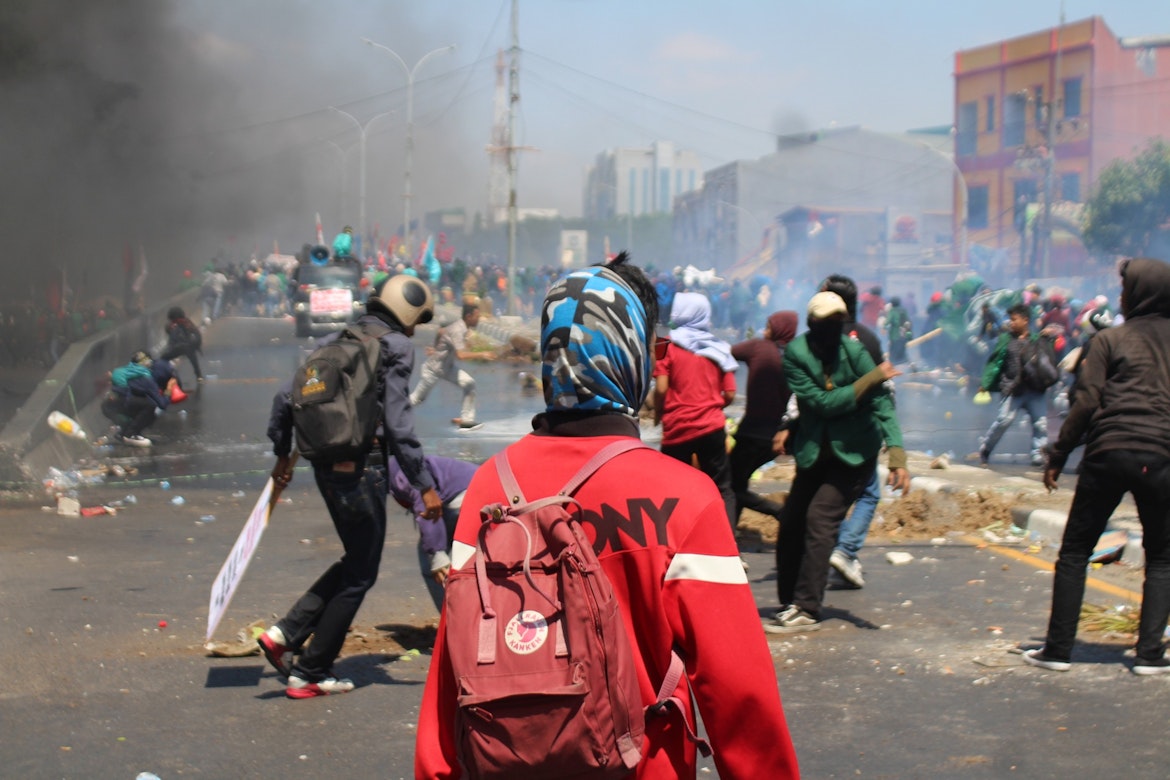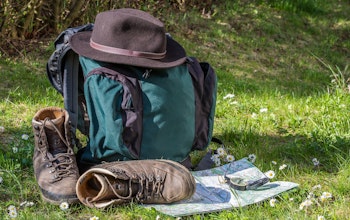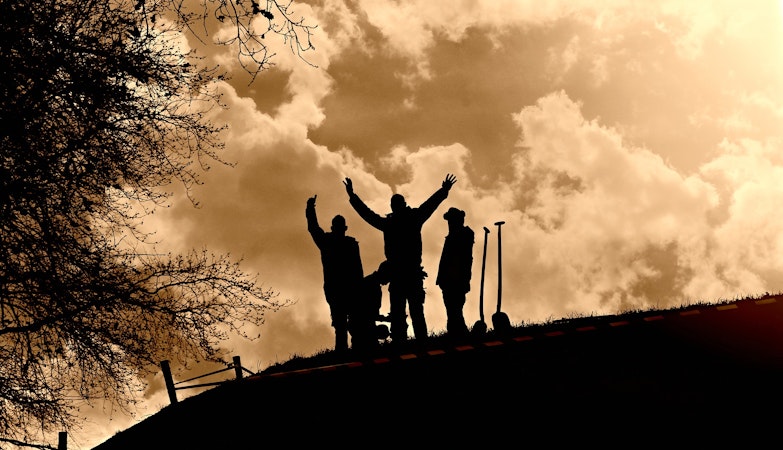As we enter the year 2020 we can anticipate further political chaos and agitation on the streets of America. It is difficult to predict how violent or widespread civil disorder will be, but it is something most should be prepared for. Even those living in rural areas can be affected by the economic and social impact of any breakdown in law and order in their region. The article below was published in Live Free’s newsletter last year. For more detailed survival information on a wide range of topics, we hope you will join.
We live in an unstable and increasingly unsafe society. While a sense of normalcy and safety still prevails the indications of societal disintegration and impending social chaos abound. The sheer multiplicity of negative trends and events constantly weakens our capacity to maintain order and safety.
Increasingly frequent natural and manmade disasters drain our economy and overstretch our emergency response resources. The following list of challenges and trends should convince any responsible citizen that a dark-age of civil chaos and general lawlessness lies ahead.
- The ongoing condemnation and persecution of police and emergency responders will continue to limit their ability to protect the public. Law enforcement officers must be more cautious and hesitant to pursue, detain and subdue suspects. In turn, criminals are more likely to flee, resist or employ weapons against the police.
- Disparagement of the police and disrespect for the law has emboldened criminals of all types. Carjacking’s, street robberies, bank robberies, theft from parked vehicles, burglaries, shoplifting, and other crimes are becoming more rampant each year. The courts often release such criminals on the suspects own recognizant or home monitoring while awaiting trial and then hands down probation or reduced sentences.
- Even so-called “gun crimes” by repeat felons are often given a proverbial “slap on the wrist” punishments or early releases from short prison sentences.
- Smash and grab crimes where multiple criminals use sledgehammers or stolen vehicles to smash through windows or even walls to access valuables and escape before police arrive are more and more frequent in every urban and suburban region.
- Violent crimes against the elderly and even the disabled are popular activities for the criminal class today.
- Drive-by shootings and vehicle-to-vehicle shootouts on our expressways is an increasing trend.
- The ongoing opioid epidemic added to the long-existing drug crisis in America and the world drives more people into the criminal world of gangs, violence and desperation.
- Extremists and mentally deranged are increasingly turning to various forms of violence acts.
- The internet and social-media facilitates flash-mob crimes where dozens of people suddenly overwhelm a store, grab merchandise and then flee before anyone can react. The internet has also made fencing stolen goods much easier and more profitable than before.
- Virtually every social and political issue now generates a demonstration that ties up police resources, disrupts business, blocks traffic and often results in violence or even outright riots and looting. There are whole organizations devoted to supporting any kind of civil disorder and several secretive, national groups that are focused on initiating violence at any type of demonstration.
- The budgets for law enforcement, fire departments, court systems and detention centers are inadequate in most urban areas and will continue to decline in the coming decades. Raising taxes causes law abiding tax payer to flee as does increased crime rates. This leaves only the poorer residents and welfare recipients who pay little or no taxes at all. Most urban areas are caught in a death spiral of rising taxes, crime, and declining revenues. This can only lead to instability and potential massive violence.
- The recent 2016 election cycle provided a glimpse of the social/political instability and division. The internet and the mass-media continues to amplify division and support extreme viewpoints as we approach the 2018 and the 2020 elections. The various sides are already gearing up for a contentious and possibly violent confrontations on many issues. No-matter what the results of these elections may be, we can anticipate violent demonstrations, active resistance and even revolutionary activities that exceed those of the turbulent 1960s and 1970s.
While some of these trends have marked previous times in American history and one or two of them alone could not be expected to generate a general collapse of law-and-order in our society, if continued, the combined effects of these trends may well lead to an unprecedented level of chaos and violence within the next few years. The period of violence and civil disorder generated by the combination of issues and agitation in the late 1960s and early 1970s offers some valuable lessons and examples. I living in Chicago during these times, I witnessed the causations and effects of the violent events of those times. The civil-rights movement, the anti-Viet Nam War movement and several other social/political movement were coopted by communists, and special interest groups with dark agendas. Certainly the Soviet Union financed the more violent groups in order to weaken the United States. Big financial interests benefited from massive real-estate displacements and public housing developments. Government agencies grew stronger and more intrusive. So-called revolutionary groups abounded with shooting, looting and bombing culminating in the great riots that destroyed whole communities and initiated a trend towards disrespect, division and crime that continues to this day. At that time America still had a solid middle class and a foundation of shared conservative values that was sufficient to check the slide toward outright revolution and disaster. The “greatest generation” of citizens who had built America and defeated tyrants and aggressors in World War Two were the dominant population then. Regrettably, today’s population lacks these unifying values and shared sense of responsibility.
The riots and demonstrations of the 1960s and 1970s were contained within the inner-cities and to downtown and government facilities. While I lived in Chicago during these times and I certainly knew enough to avoid going downtown or through certain areas, life went on as normal for the great majority. Crime and looting did not spill-over into adjoining communities or suburbs. Although there was real concern that these disruptions could generate a true revolution America was far too strong and unified and these movements eventually (literally and figuratively) burned themselves out. They did however implant ideas, trends and cultures that have continued to weaken, destabilize and divide American society as we face a new age of internal conflict.
Previously, the dominant social force in America has been conservative, self-reliant, America values that were resistant to any “isum” or extremist views. This central, law-abiding mass tended to dampen any tendency towards violence. Unfortunately the dominant tendencies today are dependency oriented, self-centered and disrespectful of society and other individuals. The media and the internet can easily foment nation-wide discontent leading to violence that would affect every community.
Today’s more homogenous communities make it far more probable that any general uprisings will spill into adjoining communities than was true in the 60s and 70s. Shopping centers in more affluent and “safe” communities will not likely be spared. Gangs and bands of criminals will not be hesitant to roam widely as police are over-occupied or driven away. This is already evident in the kinds of crime-waves being experienced in most suburban areas now.
Today criminals use google earth to locate affluent homes and shopping centers now and will be able to use this tool along with social-media to organize raids and looting. No area will be immune to attack during any future outbreak.
Having made my case that law-and-order is already breaking down and could easily degenerate into wide-spread and long-term chaos, let’s consider what steps the responsible citizen can take to survive, avoid or escape from violence ravaged areas.
The survival challenges will differ depending on your location, but there will be no “safe zones”. Violence and war tends to flow in various ways, so that one part of a town may be ravaged to ruination while another is relatively untouched. Even in places like Berlin during World War Two or modern day Bagdad there were/are areas relatively untouched and nearly normal, but no-one can assume that their home or community will be spared. We can predict that some kinds of areas will be more dangerous than others and have different challenges that will require differing preparations and responses. Let’s call them “red zones”, “orange zones” and “yellow zones”.
Red Zones would be inner city, high population density and high value commercial centers where crime rates are already high, gangs have established a solid footing and any disruption to police protection, utilities or support can quickly flash into uncontrollable violence, looting, fires and crime. The police barley maintain control of such regions today and would be virtually helpless against a general collapse.
- Avoidance and prevention: obviously moving to a safer area will improve survivability, but many citizens have economic, family and social responsibilities that effect our choice of locations. If moving is not an option, then getting involved and working to build a stronger, safer and more stable community is the only way to avoid being caught-up in a societal disaster? Take action now if you can.
- Preparation and planning: Preparation and planning: Being able to stay off the streets is critical. Having enough food, water, medications and other necessities to ride-out a crisis is your first step to survival in most situations. Red zone residents must give more attention to active defense and the possibility that escape and evacuation will be an unavoidable necessity in their preparation and planning. Bug-out bags and weapons are a necessity. Consider discussing mutual defense and aid plans with your neighbors and relatives in advance.
- Active and passive defense: Once civil disorder erupts in your area, you will be forced to take up an armed defensive posture. Blocking doors and windows, establishing a 24/7 watch schedule and having loaded firearms and extra ammunition is justified in such situations. You should also move all flammables and combustibles away from windows and have plenty of large fire extinguisher on hand as arson and Molotov -cocktails are a favorite tool of insurgents. Do not fire on anyone unless they have initiated action against your home. Don’t do anything to attract attention.
- Evacuation and escape: In many cases escape from a riot-torn area may be your best and only option. While it may be difficult to abandon your home before you are forced to do so, waiting until you are surrounded and under assault may be too late. Early evacuation may permit you to take more with you and use your vehicle, whereas fleeing at the last-minute may mean doing so on-foot while leaving most of your valuables behind. You may also want to consider how to hide, secure or even burry items that you cannot take with you to minimized losses if your home is looted or burned.
Orange Zones would usually be communities adjoining the Red Zones, suburbs of major cities, and medium sized towns. Such areas will have gang presents and local criminals that will seize on opportunities. They have active contacts with the larger Red Zone political extremists and criminal gangs and could facilitate their entry into these communities. The police forces in such areas are often undermanned, but are dedicated to defending their home towns.
- Avoidance and prevention: You need to analyze the level of risk you face in such areas. Are your neighbor’s responsible citizens or potential threats? Are you in or near a major commercial center or roadway that will attract looters and criminals? Are there signs of gang presents, drug use and high crime already appearing in your community? Even a relatively peaceful community may turn into a Red Zone if civil disorder last for more than a few days. Plan accordingly. Many smaller town and suburban communities have volunteer police auxiliaries and emergency organizations. It would be beneficial to join and support these groups to strengthen the community and enhance your level of training and awareness.
- Active and passive defense: Assaults and looting is more likely to be hit-and-miss and off-and-on in these areas. Roaming gangs and opportunistic criminals rather than massive mobs will be the main threat. A well prepared and well-armed citizen may be able to avoid, discourage or drive-off these aggressors. Fences and hedges can help delay or channel assaults away from your home. Keeping your garage clear enough to actually contain your vehicle out of site is a major advantage. You must still have a 24/7 watch plan and a well thought out plan for stopping an assault and home invasion by multiple criminals. How close are the adjoining buildings? Could there occupation by hostile people or their catching fire threaten your safety? Be prepared to deal with these possibilities.
- Evacuation and escape: While sheltering-in-place is more desirable than evacuation into or through hostile regions, it may still be a forced necessity. The same principles and tactics for Red Zone evacuations apply, but more routs and options may be available. Think “what if”.
Yellow Zones can be defined as remote small towns and semi-rural areas, away from main highways and commercial centers. While it is unlikely that such locations would initially be the sites of riots or looting they might not be immune to locally generated crimes and acts of violence by individuals and small groups. Drug gangs and extremist groups of all kinds have infiltrated even seemingly peaceful communities. Radicals and criminals are far more mobile than they were decades ago, and isolated and complacent communities could be tempting targets. Such areas often have just a few law enforcement officers who are ill-equipped to handle such threats.
- Avoidance and prevention: Any extended period of civil disorder could result increased, opportunistic criminal activities and roaming gangs endangering residents of outlying communities. Organized community and town defense is a realistic option for such locations. Consider the most likely routs and directions from which threats could appear and de prepared to discourage and reroute potentially dangerous individuals and groups. Organized 24/7 community patrols and response plans will go a long-way in preventing problems.
- Preparation and planning: Generally, being self-reliant and prepared to get by without outside supplies and services for weeks or months will be the main requirement. Community supplies and neighbors helping neighbors is important
- Active and passive defense: Even in the most peaceful communities there are some individuals who will make trouble or commit crimes of opportunity when they think they can get away with it. Identify them in advance if possible. Be vigilant and prepared to deal with attempted robberies, home invasions and other crimes. A 24/7 watch is advisable when possible.
- Evacuation and escape: If the chaos has reached the point where even small towns and rural areas are unable to maintain public safety things are truly disastrous. It’s good to have a preplanned place to go and safe route to get there, just in case. At that level of emergency the survival camp and militia-like resistance may be necessary to recover order.
Conclusions
While there are far too many factors in-play to predict when a period of general civil; disorder will develop or how severe and long-lasting such an event will be it seems more likely than not that significant upheavals lie within the next five to ten years or less. It is also apparent that such developments will impact most communities and that existing law enforcement and emergency response agencies may be inadequate to maintain order, protect the public and prevent looting and property damage. The responsible citizen should be prepared to cope with the challenges of home defense, self-defense, property protection, and if necessary evacuation through hostile surroundings. Since such situations could also interrupt food supplies, water and electrical services, and access to medical care, the citizen must stock up and build basic survival capabilities as well. The possibility of massive and enduring periods of civil disorder must be added to the already long list of potential survival challenges that the responsible American citizen of this century must prepare to face unaided if necessary.









